GHG history
In this section we will find out more about the greenhouse gases (GHG), from its initial discovery to the pioneering scientists like Joseph Fourier, John Tyndall, and Svante Arrhenius who first identified the impact of GHGs on Earth's climate.
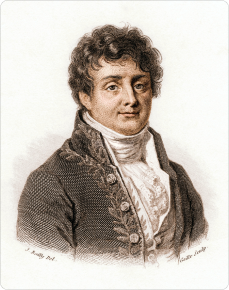
1824
Joseph Fourier
Joseph Fourier, a French mathematician and physicist, made significant contributions to the understanding of heat transfer and temperatures on Earth through his insights into what we now refer to as the greenhouse effect.
His observations were first published in 1824 in his work titled "Théorie analytique de la chaleur" (The Analytical Theory of Heat). In this work, Fourier proposed that the Earth's atmosphere acts much like an insulator, trapping heat and thus warming the planet.
Fourier's theory was an early scientific suggestion that the Earth's atmosphere could impact the planet's temperature. He suggested that the energy from the sun penetrates the atmosphere in the form of light, which is then absorbed by the Earth's surface and re-radiated as heat, a form of energy with longer wavelengths than visible light. According to Fourier, the atmosphere is more transparent to the incoming solar radiation (visible light) than to the outgoing terrestrial radiation (infrared heat). This difference in transparency means that heat is more readily absorbed when trying to escape back into space than when incoming from the sun.
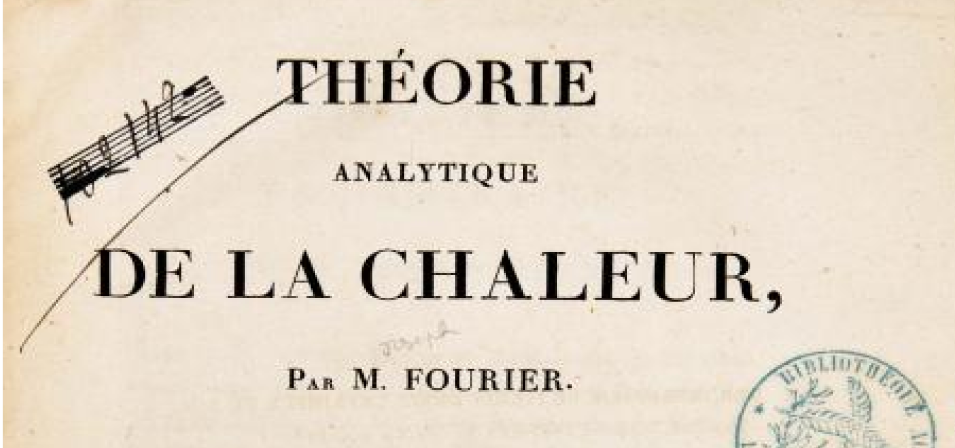
Fourier did not specifically identify which gases in the atmosphere caused this effect. His discussion was more about the Earth's atmosphere as a whole. The specific understanding that certain gases like carbon dioxide and water vapor have stronger heat-trapping capabilities came later, primarily through the work of scientists like John Tyndall and Svante Arrhenius.
Fourier’s insight laid the groundwork for the greenhouse theory, setting the stage for the subsequent developments in climate science that would come to explain the mechanisms of climate change and global warming. His analogy described a natural process that maintains Earth’s temperature at a level higher than it would otherwise be if it were solely dependent on the heat received from the sun. This early theoretical work was very important for the development of the fields of thermodynamics and climatology.
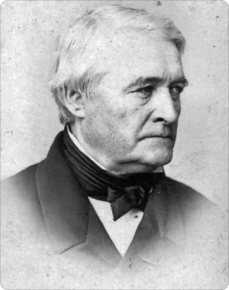
1836
Claude Pouillet
Claude Pouillet, a French physicist and contemporary of Joseph Fourier, further developed the understanding of the Earth's energy balance and the role of the atmosphere in influencing surface temperatures. In the 1830s, Pouillet expanded on Fourier's theories by introducing more precise measurements and theoretical frameworks regarding solar radiation and its interaction with the Earth.
Pouillet's statement that "the atmospheric stratum…exercises a greater absorption upon the terrestrial than the solar rays" elaborates on the concept that the atmosphere has differential effects on incoming solar radiation and outgoing terrestrial radiation. This observation is a fundamental component of what is now known as the greenhouse effect.
Pouillet's contribution was significant because he attempted to quantify the solar energy received by Earth, known as solar constant and examined how much of this energy was absorbed by the Earth's surface versus how much was reflected or absorbed by the atmosphere. His work involved measurements of solar intensity and calculations that accounted for the absorptive and reflective properties of different atmospheric components.
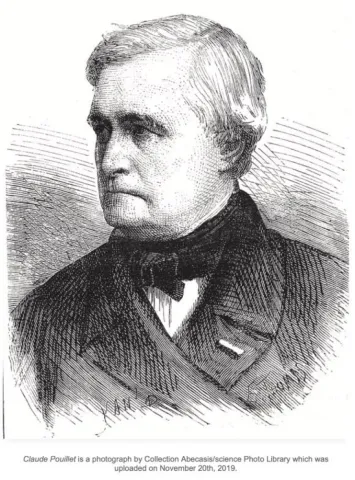
The crux of Pouillet's observation was that the Earth's atmosphere allows most of the shorter-wavelength sunlight to pass through and reach the surface but is more absorptive toward the longer-wavelength infrared radiation that the Earth emits after it has been heated by the sun. This differential absorption causes the atmosphere to trap heat, thereby warming the planet.
Pouillet's advancements laid the groundwork for later detailed studies on the Earth's radiative balance. He introduced tools and methods to measure solar radiation and developed the concept of the solar constant, which describes the total amount of solar energy per unit area that reaches the top of the Earth's atmosphere.
By building on Fourier’s theoretical ideas, Pouillet helped to further the scientific community's understanding of the atmospheric mechanisms that control Earth’s temperature. His work was critical in progressing from the qualitative descriptions of the greenhouse effect to more quantitative analyses, setting the stage for future climatological studies by scientists like John Tyndall and Svante Arrhenius, who would go on to identify specific gases responsible for the greenhouse effect.
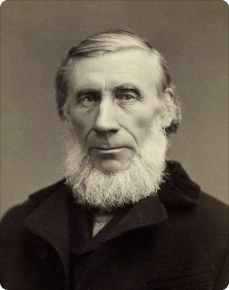
1850
John Tyndall
The first major scientific experiment that demonstrated the impact of greenhouse gases (GHGs) on climate was conducted by John Tyndall in the 1850s. Tyndall was a physicist who studied the absorption of infrared radiation by gases.
His experiments revealed that some gases, such as water vapor, carbon dioxide and methane, could trap heat within the Earth's atmosphere, leading to a warming effect. This was a foundational discovery that helped to establish the basic principles of what we now understand as the greenhouse effect.
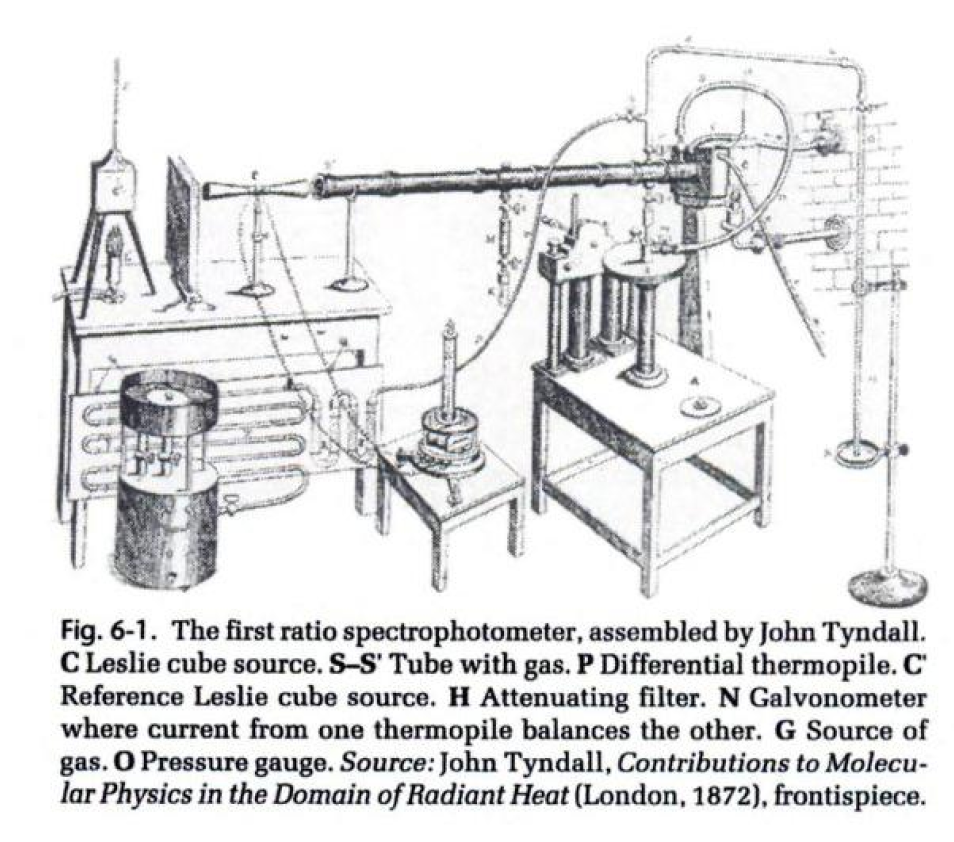
Tyndall's experiments involved measuring the infrared absorption of various gases. He used an apparatus that allowed him to shine infrared radiation through tubes filled with different gases and then measure how much radiation each gas absorbed. His findings demonstrated that while oxygen and nitrogen, which make up a large part of Earth's atmosphere, were largely transparent to infrared radiation, gases like carbon dioxide and water vapor absorbed much more infrared radiation.
These experiments laid the groundwork for later research into the role of greenhouse gases in climate change, eventually leading to the development of modern climate science. Tyndall's work was very important because it showed that the Earth's temperature could be influenced by the atmospheric concentration of certain gases, providing an early understanding of how human activities could potentially alter the climate through emissions of these gases.
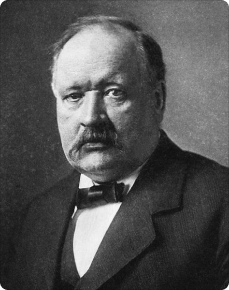
1896
Svante Arrhenius
Svante Arrhenius was a Swedish scientist who made significant contributions to our understanding of the impact of greenhouse gases on Earth's climate.
In 1896, he published a groundbreaking paper titled "On the Influence of Carbonic Acid in the Air upon the Temperature of the Ground," which was one of the first quantitative studies to suggest that changes in the levels of carbon dioxide (CO2) in the atmosphere could substantially alter the Earth's surface temperature through the greenhouse effect.
Arrhenius developed a theory that explained how CO2 and water vapor regulate Earth's temperature. He calculated how changes in the concentration of CO2 in the atmosphere could affect the Earth's climate. Using basic infrared radiation theory and measurements, he estimated the amount of energy Earth received from the sun and hypothesized how much energy was absorbed by CO2 and water vapor.
One of the most notable aspects of his work was the prediction that doubling the amount of CO2 in the atmosphere would lead to a temperature increase of approximately 5-6 degrees Celsius on Earth's surface—a remarkably accurate estimate compared to modern calculations. This was a pioneering thought that linked human activities, such as burning fossil fuels, with potential global warming.
Arrhenius used historical climate data, including temperatures and CO2 estimates derived from various sources like ice core data and plant stomata, to support his hypothesis. His work suggested a link between past climate changes and atmospheric CO2 concentrations.
Arrhenius's research was one of the first to imply that human-induced changes to atmospheric CO2 levels could modify Earth’s climate. Although his ideas were not immediately accepted and were subject to skepticism for many years, they laid foundational concepts for the field of climate science.
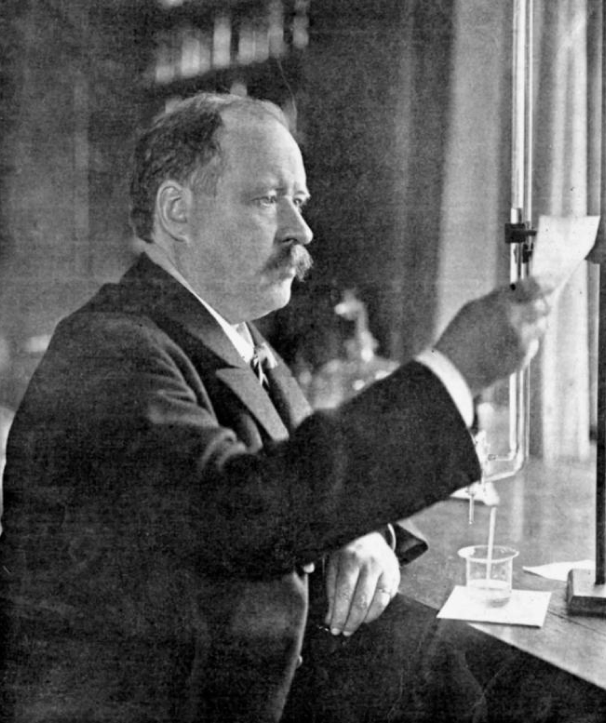
Arrhenius's research was ahead of its time and did not see significant recognition until the mid-20th century when the environmental and climatic impacts of increased industrialization became more apparent. His work has since been celebrated as a seminal contribution to climate science, providing an early theoretical framework for understanding global warming and the role of greenhouse gases in climate regulation.
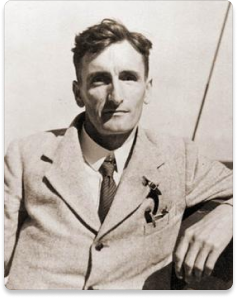
1930
Guy Stewart Callendar
Following Svante Arrhenius, another significant contributor to the understanding of greenhouse gases and their impact on climate was Guy Stewart Callendar [6]. Callendar, a British engineer and amateur meteorologist, extended and popularized the concept of global warming due to increased carbon dioxide levels in the atmosphere during the late 1930s and 1940s.
He is best known for what is now called the "Callendar Effect," the theory that global temperature increases are due to rising levels of CO2 resulting from fossil fuel combustion. Callendar was the first to argue that mankind had become an important agent of global change and that the CO2 emissions from the combustion of fossil fuels were large enough to cause global warming.
Callendar compiled extensive meteorological and industrial data to demonstrate a warming trend in the 20th century, which he linked to CO2 emissions. He analyzed temperature records from weather stations across the world, meticulously correcting them for urban heat effects and other biases, thus providing a more accurate global surface temperature record.
Callendar estimated past levels of atmospheric CO2 using measurements from various sources and compared these levels with modern measurements. He calculated the infrared absorption properties of CO2 and its role in the earth's energy balance, supporting Arrhenius’s earlier predictions.
Callendar was one of the first to emphasize that global warming was ongoing and that it had a human origin. His efforts helped bring the idea of anthropogenic global warming into the broader scientific discussion, although it took many more decades for the concept to gain widespread acceptance among scientists.
Callendar's work laid very important groundwork for later climate researchers like Charles David Keeling, who provided definitive empirical proof of rising atmospheric CO2 levels with the Keeling Curve in the 1950s and 1960s. Together, these scientific advancements played a critical role in developing modern climate science.
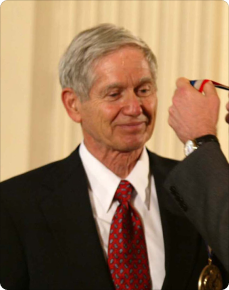
1950
Charles David Keeling
Following Guy Stewart Callendar, one of the most significant figures in advancing the understanding of greenhouse gases and their impact on climate was Charles David Keeling.
Keeling's work in the late 1950s and onwards provided the first continuous, precise measurements of atmospheric carbon dioxide (CO2) levels, leading to what is now famously known as the "Keeling Curve."
Keeling was the first to make continuous measurements of atmospheric CO2, starting in 1958 at the Mauna Loa Observatory in Hawaii. This site was chosen due to its remote location, providing a clear picture of global trends in CO2 levels away from the immediate effects of local pollution sources.
The data collected by Keeling showed a clear and consistent upward trend in CO2 levels year after year, forming what is known as the Keeling Curve. This graph became one of the most important pieces of evidence of long-term anthropogenic increases in planetary CO2 levels. It also displayed a seasonal oscillation, with CO2 levels rising during the northern hemisphere's winter and falling during its summer due to the large land mass of forests absorbing CO2 during their growing season. Keeling's data provided the empirical foundation for understanding the link between human activities, such as the burning of fossil fuels and the increasing concentrations of greenhouse gases in the atmosphere. This was very important in establishing the scientific consensus on human-driven climate change.
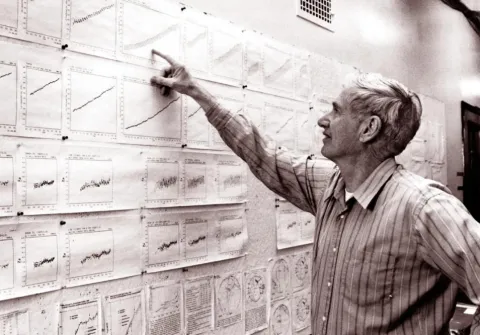
Keeling advocated for the importance of long-term funding for atmospheric CO2 research, emphasizing the necessity of understanding environmental changes. His work significantly raised scientific and public awareness of global warming and influenced international climate policy discussions.
Keeling's meticulous and pioneering work has provided invaluable data that underpins much of current climate change research and modeling. His contributions continue to be a cornerstone in the ongoing study of global climate dynamics and are essential to the discussion of mitigation strategies and policies to address climate change.
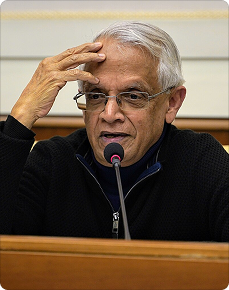
1975
Veerabhadran Ramanathan
Another influential contemporary figure in the field of climate science and greenhouse gas research is Veerabhadran Ramanathan.
He is a distinguished atmospheric scientist whose research has had significant impacts on our understanding of climate change dynamics.
Ramanathan's early work in the 1970s on the radiative forcing of halocarbons, particularly chlorofluorocarbons (CFCs), was pivotal. He discovered that CFCs, used widely at the time in aerosols and refrigeration, have a greenhouse effect thousands of times more potent than CO2. This discovery contributed to the eventual regulation of CFCs globally under the Montreal Protocol to protect the ozone layer.
Ramanathan has conducted extensive research on atmospheric brown clouds and the role of aerosols in climate change. He has shown that aerosols such as black carbon (soot) not only contribute to global warming but also have complex effects on regional climates, such as altering rainfall patterns and accelerating glacier melt.
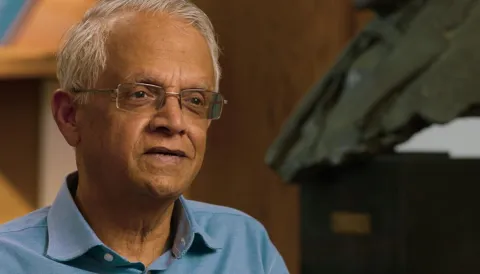
His work extends to understanding various climate forcings and feedback mechanisms, including the interactions between clouds, aerosols and greenhouse gases. He has been instrumental in detailing how these interactions affect Earth’s energy balance and climate.
Ramanathan has led numerous international field campaigns and collaborative research projects aimed at understanding regional impacts of climate change and air pollution, particularly in South Asia and the Indian Ocean region.
Beyond scientific research, Ramanathan has been active in advising policymakers and leaders worldwide on climate mitigation strategies. He emphasizes the need to address short-lived climate pollutants like methane, black carbon and HFCs as a strategy to achieve rapid climate benefits and reduce global warming potential in the near term.
Educational Initiatives and Public Engagement: He is also committed to education and public outreach, working to communicate the urgency of climate action and the science behind it to broader audiences through various platforms.
Veerabhadran Ramanathan’s contributions to climate science are notable for their breadth and depth, significantly enhancing the global understanding of anthropogenic impacts on climate and helping to drive international policy and action on climate change.

1988
James E. Hansen
Following Charles David Keeling, another influential scientist in the study of greenhouse gases and climate change is James E. Hansen. Hansen, an American climatologist and former NASA scientist, has played a critical role in publicizing the impacts of global warming. His work and advocacy have significantly shaped public and governmental understanding and policies regarding climate change.
Hansen significantly advanced global climate modeling. His models have been instrumental in predicting future climate conditions based on different scenarios of greenhouse gas emissions. This work has provided a scientific basis for understanding how changes in CO2 and other gases could affect global temperatures, weather patterns and sea levels.
Perhaps most famously, Hansen brought the issue of climate change to the forefront of public awareness with his 1988 testimony before the United States Congress. During this testimony, he stated with high confidence that global warming was already occurring, which was a bold and influential statement at the time. This testimony is widely credited with raising broad awareness about global warming and influencing both public opinion and policy.
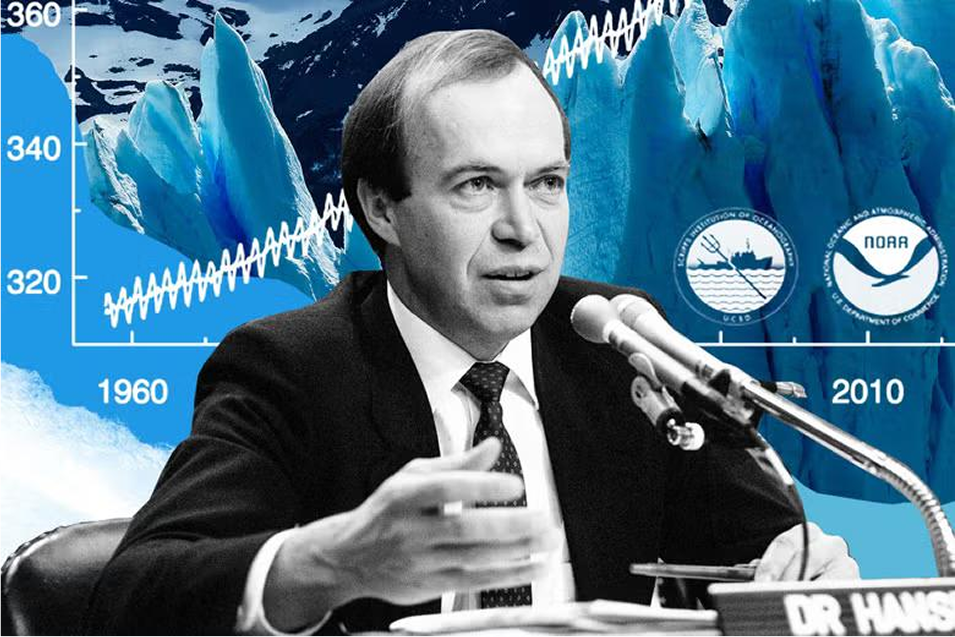
before Congress in 1989. Photo illustration by Lisa Larson-Walker. Photo by Dennis Cook/AP
Images and Mario Tama/Getty Images.
Hansen has extensively studied various climate forcings, which are factors like greenhouse gases that can affect the Earth's energy balance. His research has emphasized the importance of aerosols and trace gases in addition to CO2. Hansen's studies have highlighted the urgency of addressing anthropogenic forcings to mitigate climate change.
Beyond his scientific contributions, Hansen is known for his advocacy for robust action to combat climate change. He has been a vocal proponent of reducing CO2 emissions, often critiquing government policies and actions he views as insufficient. Hansen's outspoken nature has brought attention to the need for urgent, decisive action and policy-making to address the climate crisis.
James E. Hansen's work has had a profound impact on climate science, policy and activism, continuing the legacy of earlier scientists by using data-driven analysis to advocate for necessary changes to address global warming. His efforts have made him one of the most recognized and influential voices in the field of climate science.

1999
Michael E. Mann
Following James E. Hansen, another significant figure in the study of greenhouse gases and their impact on climate change is Michael E. Mann. Mann is best known for his work onpaleoclimate reconstructions, which has been pivotal in understanding past climate conditions and projecting future trends.
Mann co-authored a paper in 1999 that included a graph famously known as the "hockey stick" graph. This chart showed temperature records over the past millennium, demonstrating that modern temperatures had risen sharply in comparison to the past, resembling a hockey stick's shape. This visualization became a central icon in the climate change debate, illustrating the dramatic rise in temperature associated with industrialization and increased greenhouse gas emissions.
Mann's work has heavily focused on reconstructing past climate conditions using proxy data from tree rings, ice cores, coral and other sources. This research helps scientists understand the context of current climate changes and refine models predicting future climate scenarios.
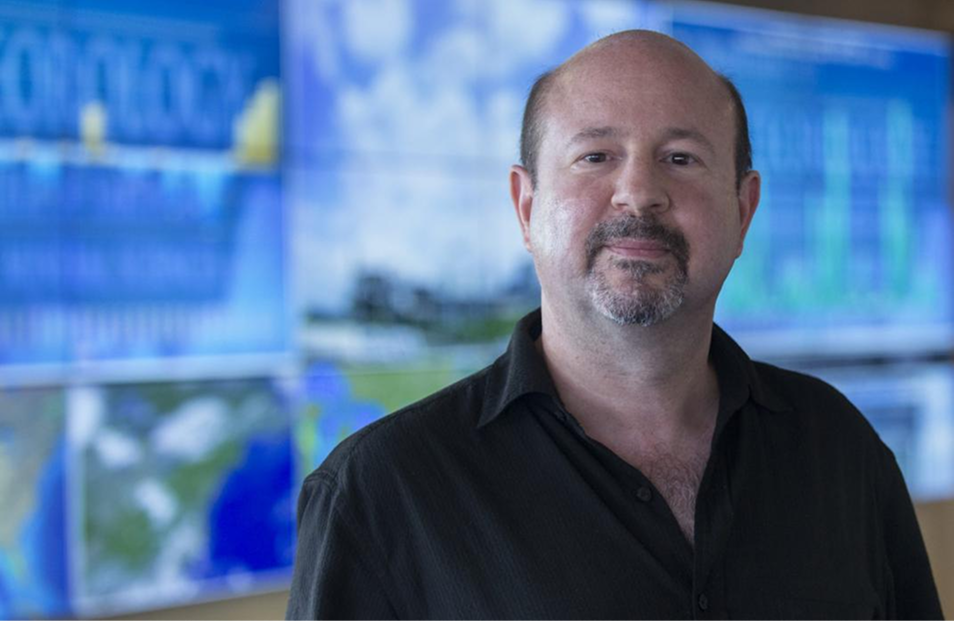
Like Hansen, Mann has been a prominent public figure in climate science, often engaging with the media and testifying before legislative bodies to communicate the urgency of climate issues. He has written extensively for both scientific and general audiences, advocating for policy changes to reduce carbon emissions and address global warming.
Mann has also been at the forefront of defending climate science against skeptics and detractors. His involvement in the "Climategate" controversy, where emails between climate scientists were leaked in an attempt to discredit them, highlighted the challenges faced by climate scientists. Mann's defense of his work and the broader scientific consensus on climate change has been critical in maintaining public trust in climate research.
Michael E. Mann continues to contribute to the understanding of climate dynamics and impacts, making significant efforts to bridge the gap between scientific research and public policy. His work, particularly in reconstructing past climates and engaging with the public and policymakers, plays a very important role in the ongoing efforts to address and mitigate global warming.

2004
Gavin Schmidt
Following Veerabhadran Ramanathan, another prominent figure in the realm of climate science, particularly with a focus on the impacts of greenhouse gases, is Gavin Schmidt.
Schmidt is a climatologist, climate modeler and current Director of the NASA Goddard Institute for Space Studies (GISS). His work focuses on improving methods to simulate the past and predict future climate conditions, which is very important for understanding and mitigating the effects of climate change.
Schmidt specializes in the development and application of large-scale climate models. These models are essential for understanding how changes in atmospheric conditions, like increases in greenhouse gases, impact global temperatures, weather patterns and climate systems over time.
Schmidt has been a vocal advocate for communicating science to the public. He co-founded the highly influential blog "RealClimate," which provides expert insights and explanations about climate science topics for journalists and the public. The blog aims to improve public understanding by clarifying misconceptions and presenting scientific findings related to climate change.
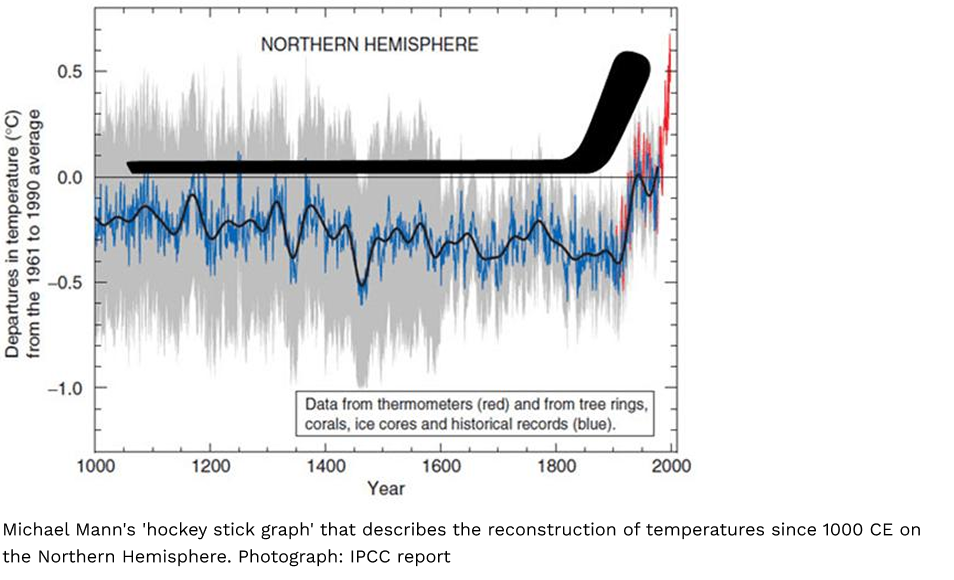
Schmidt's research includes significant work on the variability of the climate system and how sensitive Earth's climate is to changes in greenhouse gas concentrations. Understanding climate sensitivity is critical for predicting the extent of future warming based on different emission scenarios. Through his role at NASA and his public speaking, Schmidt has influenced public policy by providing data and clear explanations of the science behind climate change. His work helps policymakers make informed decisions regarding climate action and mitigation strategies.

Schmidt's contributions to climate science have been recognized with several awards, including being elected as a Fellow of the American Geophysical Union and receiving the American Meteorological Society's Climate Communication Prize.
Gavin Schmidt continues to be an important figure in climate science, bridging the gap between complex climate modeling and public discourse, ensuring that the implications of climate research are accessible and actionable for policymakers and the broader community.

2006
Corinne Le Quéré
Following Gavin Schmidt, a key figure in the study of greenhouse gases and climate change is Corinne Le Quéré. She is aprofessor of Climate Change Science and Policy at the University of East Anglia and has been influential in tracking carbon emissions and understanding their impact on global climate.
Le Quéré has played a pivotal role in the development and annual update of the Global Carbon Budget, which is a critical tool for scientists and policymakers to understand how much carbon dioxide is emitted from sources like fossil fuel combustion and land-use changes and how much is absorbed by sinks such as oceans and forests. This work is very important for tracking progress toward global climate goals.
Her research has significantly advanced understanding of the carbon cycle, particularly regarding how the oceans act as a carbon sink. Her studies help quantify the role of natural processes in mitigating climate change and how these might change as the climate warms.
Le Quéré's work often explores the interaction between human activities and the natural carbon cycle. This includes studies on the effects of economic growth and recessions on carbon emissions, as well as the potential impacts of future technological and societal changes.
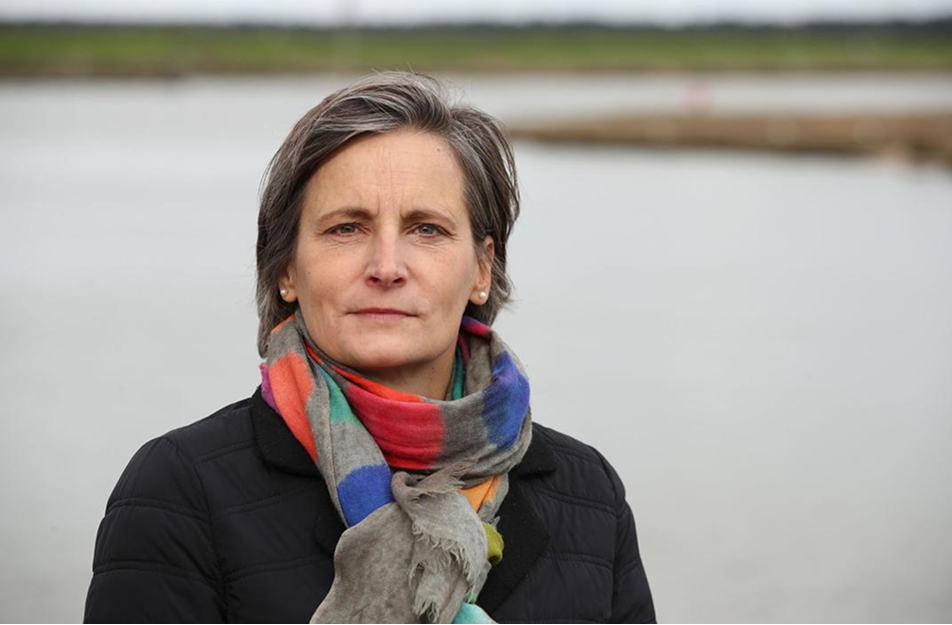
She has been deeply involved in policy advising and public communication about climate change. Le Quéré's ability to translate complex scientific data into actionable information has made her a key player in international climate negotiations and policy discussions.
Le Quéré has held several leadership positions, including as the Director of the Tyndall Centre for Climate Change Research, which focuses on interdisciplinary research related to mitigating and adapting to climate change. She has also been a lead author on several Intergovernmental Panel on Climate Change (IPCC) reports, contributing to the global understanding of climate science.
Corinne Le Quéré's work continues to have a profound impact on how we understand and respond to climate change, particularly in terms of carbon dynamics and policy development. Her contributions are integral to both scientific research and the global dialogue on environmental strategies.
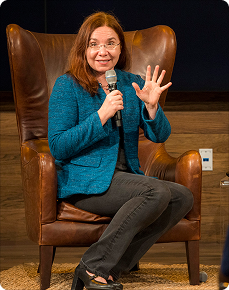
2018
Katharine Hayhoe
Following Michael E. Mann, a significant contemporary figure in the realm of climate science, particularly in relation to the study of greenhouse gases and their impact on climate, is Katharine Hayhoe.
She is a prominent atmospheric scientist and professor of political science and her work focuses on developing and applying high-resolution climate projections to evaluate the future impacts of climate change on human systems and the natural environment.
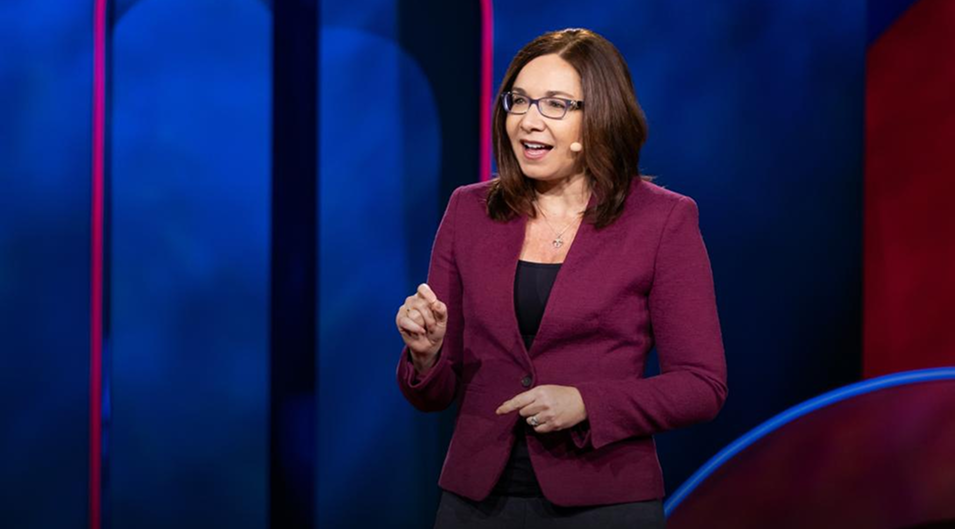
Katharine Hayhoe is particularly renowned for her efforts in climate communication. She excels in making complex climate science accessible and relatable to the public, policymakers and other stakeholders. Her approach often involves breaking down myths about global warming and explaining the importance of proactive measures to mitigate climate change.
Hayhoe's scientific work involves assessing how climate change affects specific regions, which is very important for developing localized adaptation and mitigation strategies. She analyzes data to provide region-specific projections that help communities understand and prepare for potential impacts like increased heat waves, droughts and flooding.
One of Hayhoe's notable approaches is her engagement with communities that are often skeptical of climate science, including religious and conservative groups. Being a Christian herself, she bridges the gap between scientific and religious communities, advocating that caring for the Earth is compatible with Christian faith.
Hayhoe is actively involved in policy-making processes by providing scientific advice to government bodies and NGOs. Her work emphasizes the need for immediate action to reduce greenhouse gas emissions and prepare for climate impacts. She co-authored the book "Saving Us: A Climate Scientist's Case for Hope and Healing in a Divided World," where she argues for a collective effort to combat climate change, drawing on her experiences communicating science in deeply divided areas. Hayhoe also makes extensive use of social media and online platforms to educate the public about climate change, contributing to broader outreach and engagement.
Katharine Hayhoe's work stands out for its integration of high-level scientific research with effective communication and outreach strategies, aimed at fostering a broad and inclusive understanding of climate change issues and encouraging action across diverse communities.
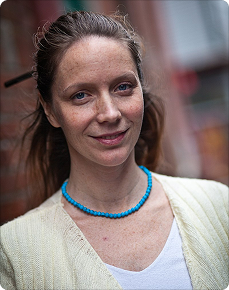
2019
Kim Cobb
Following Friederike Otto, another significant contemporary in the field of climate science, particularly in the study of the impacts of greenhouse gases on climate, is Kim Cobb.
Cobb is a professor and researcher whose work primarily focuses on paleoclimate and climate variability, helping to deepen our understanding of how climate systems have changed over millennia and how these changes inform current climate patterns and future projections.

Key contributions of Kim Cobb include:
Paleoclimate Research:
Cobb's research often utilizes coral reefs as archives of past climate data. By analyzing coral isotopes, she reconstructs past climate conditions, particularly sea surface temperatures and rainfall patterns. This research provides very important insights into how climate systems have behaved in the past under different concentrations of atmospheric CO2, helping to predict how they might respond to current and future levels.
Climate Variability and Change:
She has made significant contributions to understanding natural climate variability, such as the El Niño-Southern Oscillation (ENSO) and its interaction with anthropogenic climate change. Her findings help explain how human-induced warming influences the frequency and intensity of El Niño events, which have profound global climate and weather impacts.
Advocacy and Public Communication:
Cobb is highly active in public outreach and climate advocacy. She frequently speaks about the need for urgent action to address climate change and engages with a variety of audiences, including policymakers, students and the general public, to raise awareness about the importance of climate science.
Leadership and Mentorship:
Cobb leads by example in integrating sustainability into her personal and professional life. She is also committed to mentoring the next generation of climate scientists, focusing on fostering diversity and inclusion within the scientific community.
Scientific Collaboration and Policy:
She actively participates in scientific collaborations that aim to inform policy decisions. Cobb’s work emphasizes the practical implications of climate science research, advocating for evidence-based policies to mitigate the impacts of climate change.
Kim Cobb's research and advocacy continue to play a vital role in advancing the understanding of historical climate dynamics and their relevance to today's climate challenges. Her efforts are critical in translating scientific knowledge into actionable policy and public engagement to address global warming.
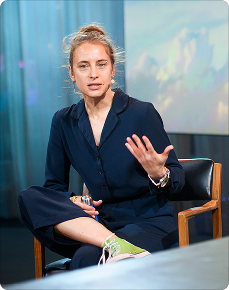
2021
Dr. Friederike Otto
Continuing the list of influential figures in climate science, another prominent scientist is Dr. Friederike Otto. She has made significant contributions to the field of climate attribution, particularly in understanding how human-induced climate change affects the frequency and severity of extreme weather events.
Key contributions of Friederike Otto include:
Climate Attribution Science:
Otto is a leading figure in the relatively new field of climate attribution science. This discipline involves using statistical methods and climate models to determine how much human-induced climate change is to blame for specific extreme weather events, such as heatwaves, floods and droughts.
Rapid Response Analyses:
She has been instrumental in developing and promoting rapid response analyses that quickly assess the role of climate change in extreme weather events as they happen. This timely information is very important for media coverage and policy discussions that occur right after such events.
Public Communication:
Otto is committed to communicating the results of attribution studies to the public, helping to increase awareness about the real-time impacts of climate change. Her work helps lay the groundwork for informed policy decisions regarding climate adaptation and mitigation strategies.
World Weather Attribution (WWA):
Otto co-founded the World Weather Attribution initiative, which brings together an international group of scientists to analyze and communicate the possible influence of climate change on extreme weather events. This initiative has been pivotal in placing extreme event attribution at the forefront of climate science discussions.
Academic Contributions and Advocacy:
Otto has authored numerous scholarly articles and has been involved in key reports, including contributions to the Intergovernmental Panel on Climate Change (IPCC). She advocates for stronger climate action based on the scientific understanding of climate impacts.

Dr. Friederike Otto’s work is critical in bridging the gap between climate science and societal impacts, providing clear, evidence-based connections between global warming and extreme weather. Her efforts continue to enhance our understanding of climate change's role in influencing extreme events, informing both public perception and policy responses.